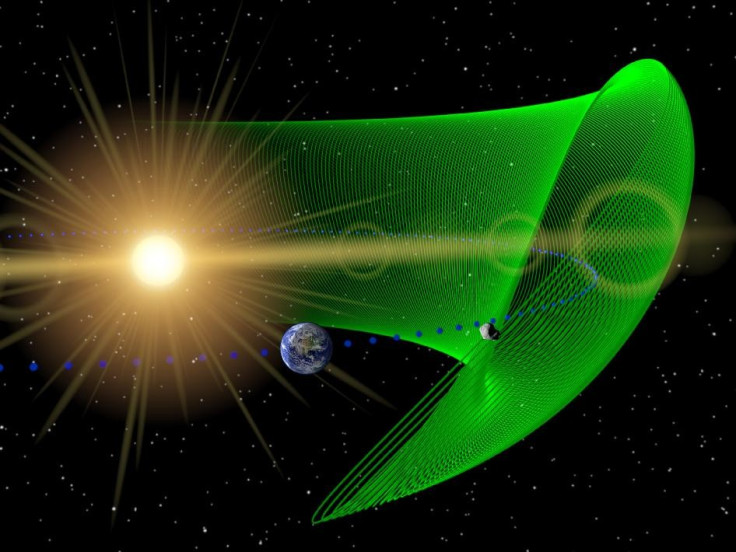NASA Discovers Trojan Asteroid In Earth Orbit

NASA's astronomers have detected an asteroid not far from Earth which is moving in the same orbit around the Sun.
The 200-300m-wide rock sits in front of our planet at a gravitational "sweet spot", but does not currently poses any threats, scientists said.
The "Trojan" asteroid was named after its position in the sky and similar asteroids had previously only been detected at Jupiter, Neptune and Mars.
2010 TK7, as it is known, was found by Nasa's Wise telescope, while the discovery was first reported in this week Nature's Journal.
Scientists have welcome the news as if Tojans are being relatively close and stable, astronauts could in the future centre their space mission on them and study them in much more depth.
2010 TK7 is not set to be the first the focus of a first Trojan-centred expedition as it travels too far above and below the plane of Earth's orbit, which would require a lot of fuel to reach it.
Scientists however remain optimistic as the discovery could give way to the uncovering of new and more adequate Trojans.
The difficulty is the viewing geometry that puts any Trojan, from the perspective of an Earth-based telescope, in bright skies and the team needed to usean orbiting telescope sensitive to infrared light to pick up 2010 TK7.
Wise, the Wide-field Infrared Survey Explorer launched in 2009, said it had examined more than 500 Near-Earth Objects (NEOs), 123 of which were new to science.
After being given and reviewing the bulk of the data, the authors of the Nature paper tried to find potential candidates that might be Trojans, and submitted their findings to the Canada-France-Hawaii Telescope, which confirmed the status of 2010 TK7.
2010 TK7 is currently about 80 million km from Earth, and should come no closer than about 25 million km, with scientists saying its orbit appears stable at least for the next 10,000 years.
2010 TK7's existence should not really be a surprise. Jupiter, Neptune and Mars all have collections of rocks sitting in the so-called Lagrange points 60 degrees ahead of or behind the planets in their orbits.
Scientists had predicted Earth should have Trojans, but they have been difficult to find because they are relatively small and appear near the sun from Earth's point of view.
"These asteroids dwell mostly in the daylight, making them very hard to see," Martin Connors of Athabasca University in Canada, lead author of a new paper on the discovery in the July 28 issue of the journal Nature, told the press.
"But we finally found one, because the object has an unusual orbit that takes it farther away from the sun than what is typical for Trojans. WISE was a game-changer, giving us a point of view difficult to have at Earth's surface."
"These objects are difficult to find from Earth, simply because they're not very big and they're pretty faint, and they're close to the Sun as seen from Earth," Christian Veillet from the Canada-France-Hawaii Telescope and a co-author on the Nature study, confirmed to the BBC
"But we can find them from space, and future satellites will likely find some more. We think that there are others which will be very close to the Earth and have motions that make them relatively easy to reach. So, they could be potential targets to go to with spacecraft," he told BBC News.
© Copyright IBTimes 2024. All rights reserved.






